Once a project is loaded, you'll be greeted by the following screen. The Project View is divided into the Song Area, and the Heads-Up Display (or HUD, for short.)
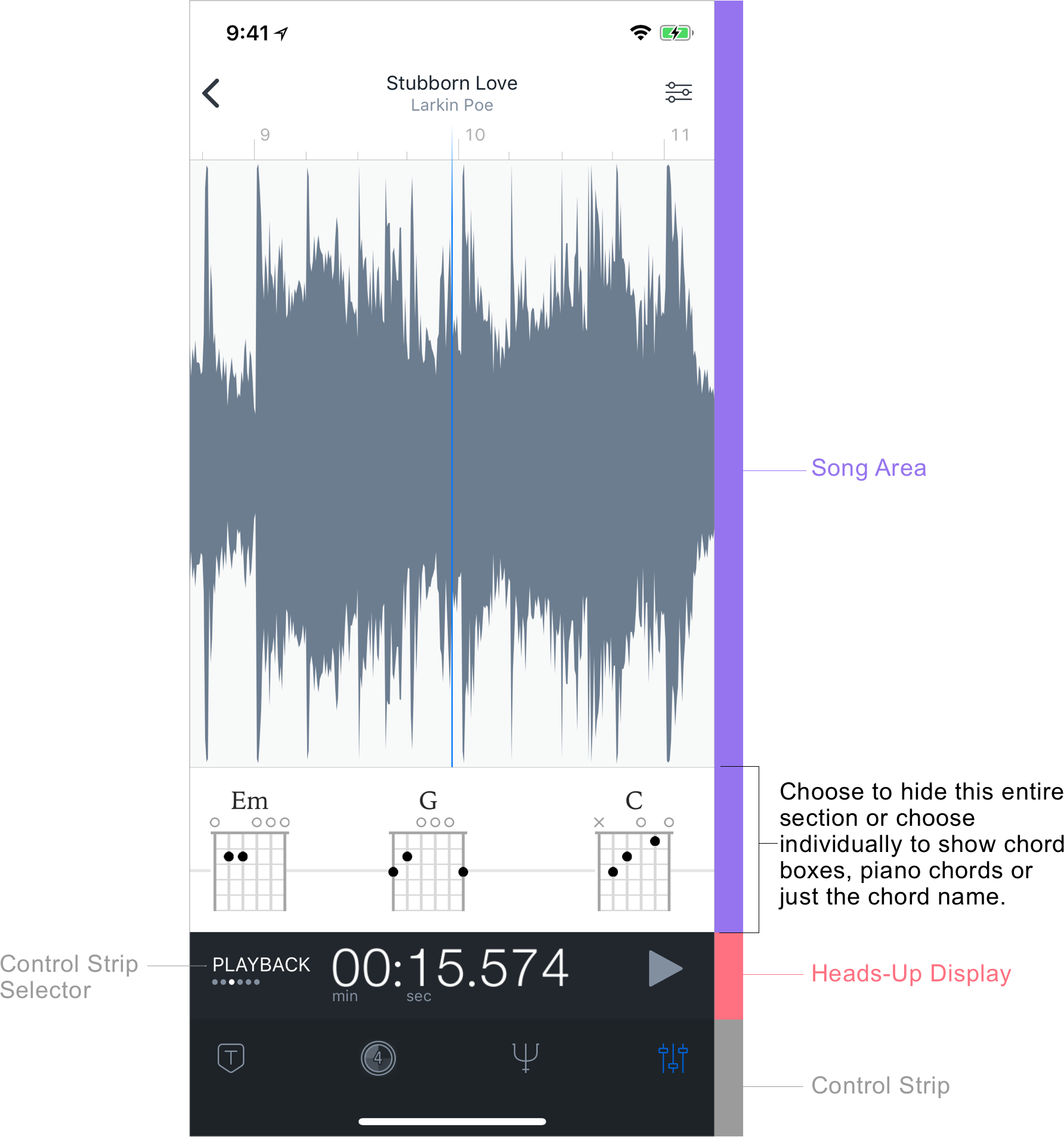
The Song Area
This section of the Project View displays the "content" of the currently-selected Song View. You can think of this area as the place where you mark up the song with the information that helps you to learn and practice playing songs.
The amount of information that you add to a song in Capo is up to you. For some, it may be important to ensure that the bars and beats are correctly marked, and all the chords are correct down to the voicing they wish to play. For others, they may prefer to disable the chord display altogether and focus only on listening and placing markers at key locations in the song.
Song Views
At the top right of your screen you'll find the Song View Selector. Tapping on this control reveals a menu that allows you to choose between Capo's song views. Your choice of Song View controls what is displayed in the Song Area.
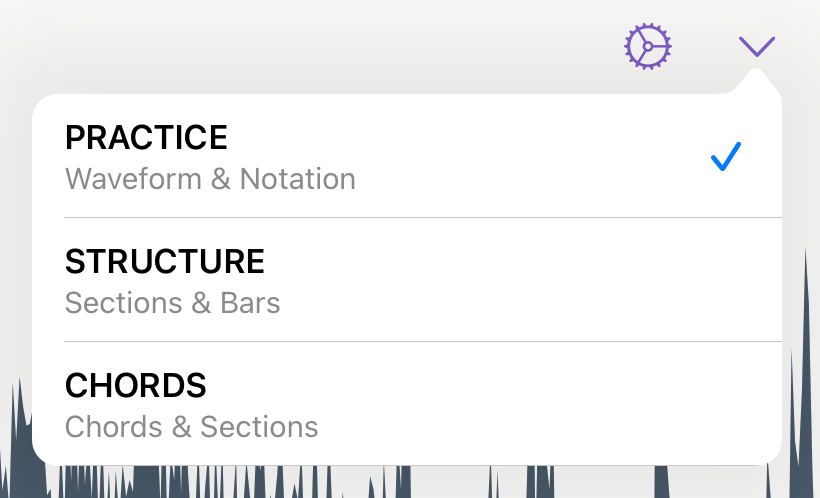
Practice
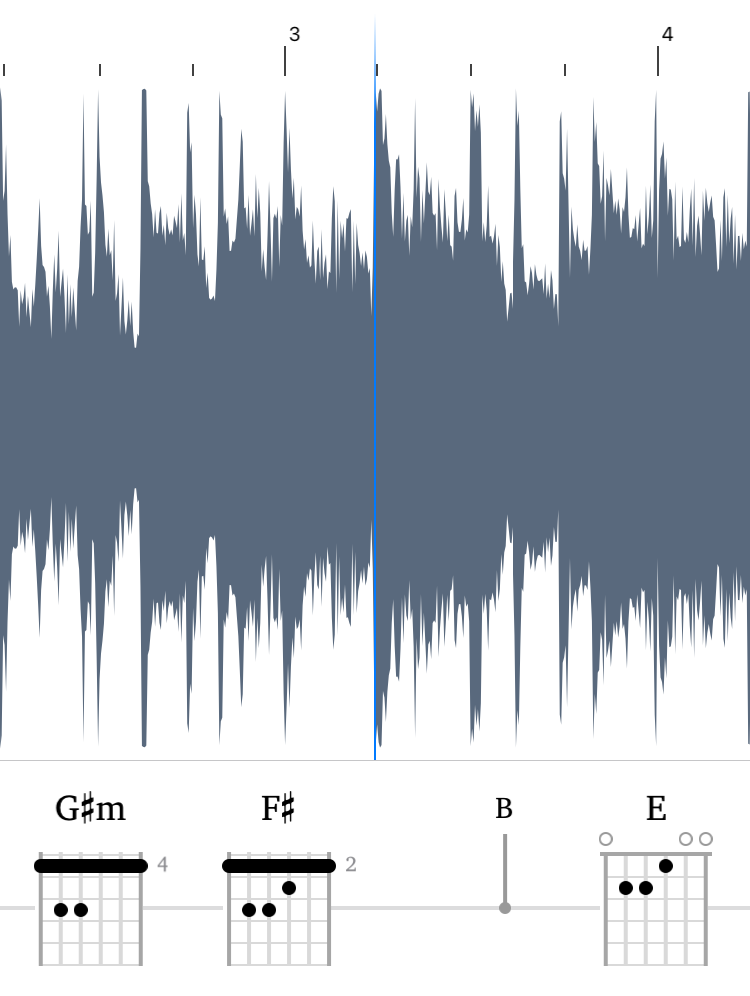
The Practice Song View is focused primarily on playback. The song's waveform takes up the bulk of the window, and you may optionally display and edit chords below it.
Structure
NOTE: This song view is only available on iOS 14 or later.
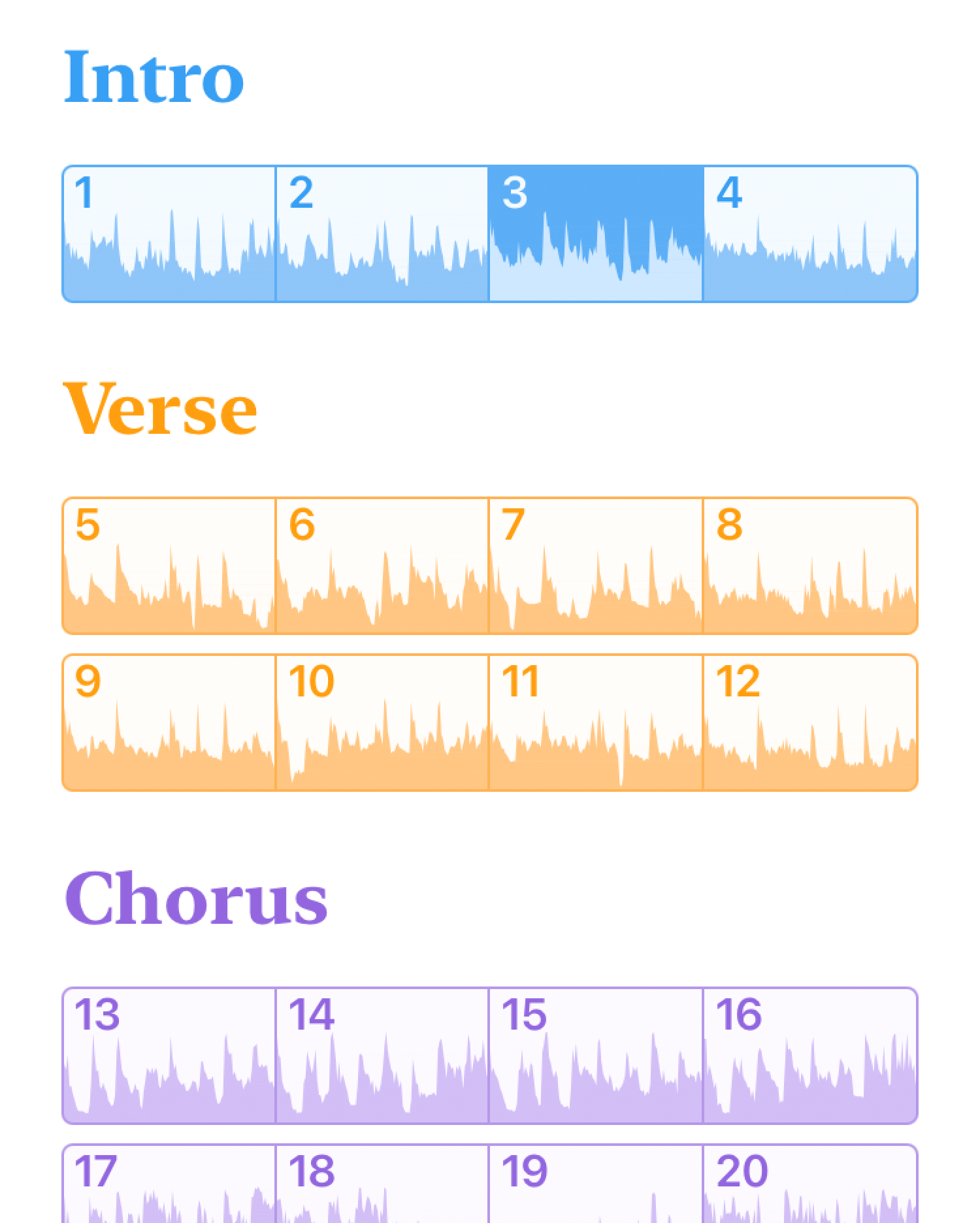
(Almost) all songs contain one or more sections consisting of bars of one or more beats. The Structure song view displays an overview of the song where you can interact with these elements.
Here you can define and edit sections, and modify Capo's beat grid.
Chords
NOTE: This song view is only available on iOS 14 or later.
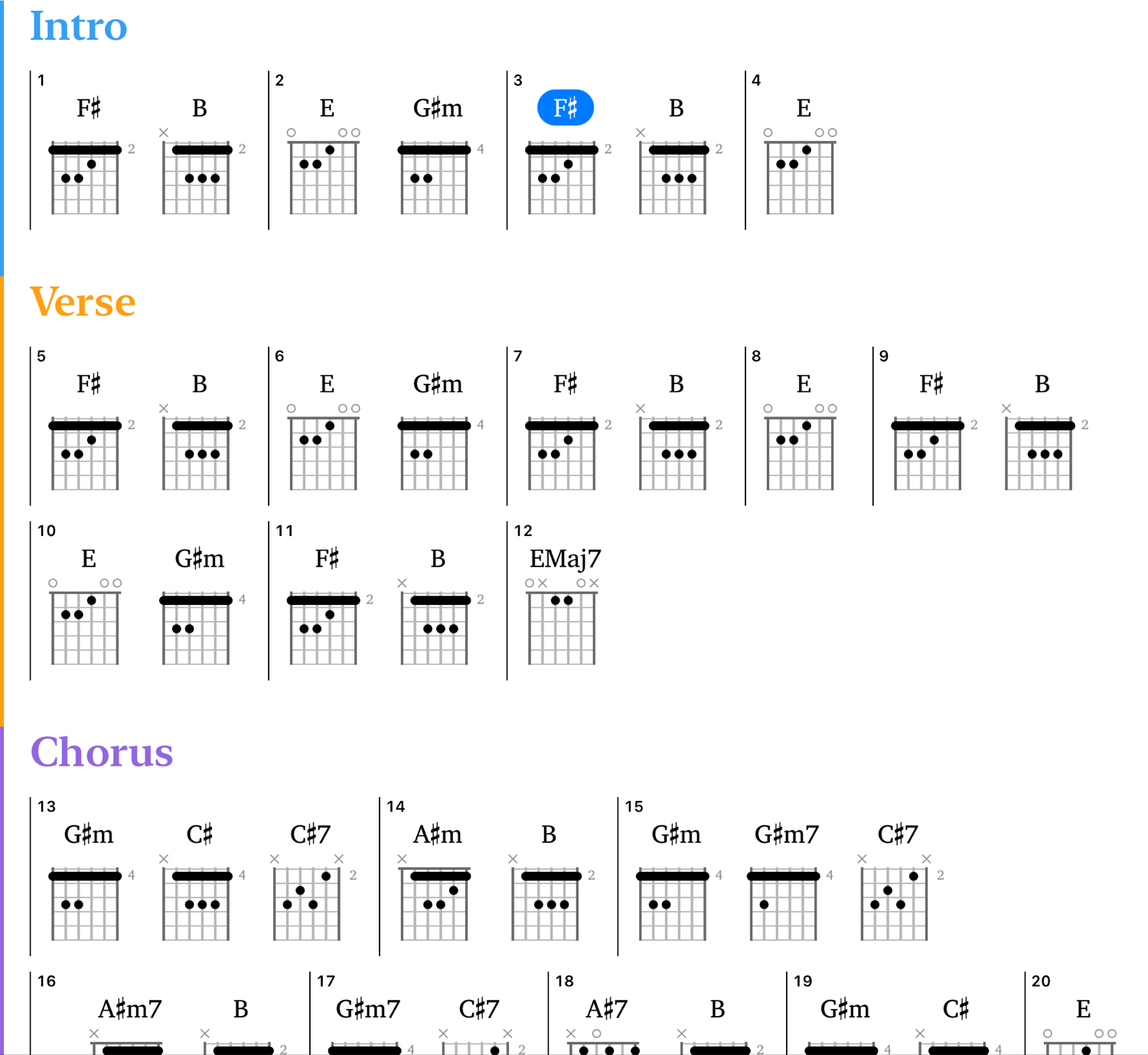
Chord-oriented musicians will appreciate the compact overview that the Chords song view brings to Capo. This view displays the chords in your song, organized by the sections and bars that you defined in the Structure Song View.
Changing The Display of Chords

To change how chords are displayed, tap the button at the top-right of the In-Song View as shown above to reveal the Notation Settings:
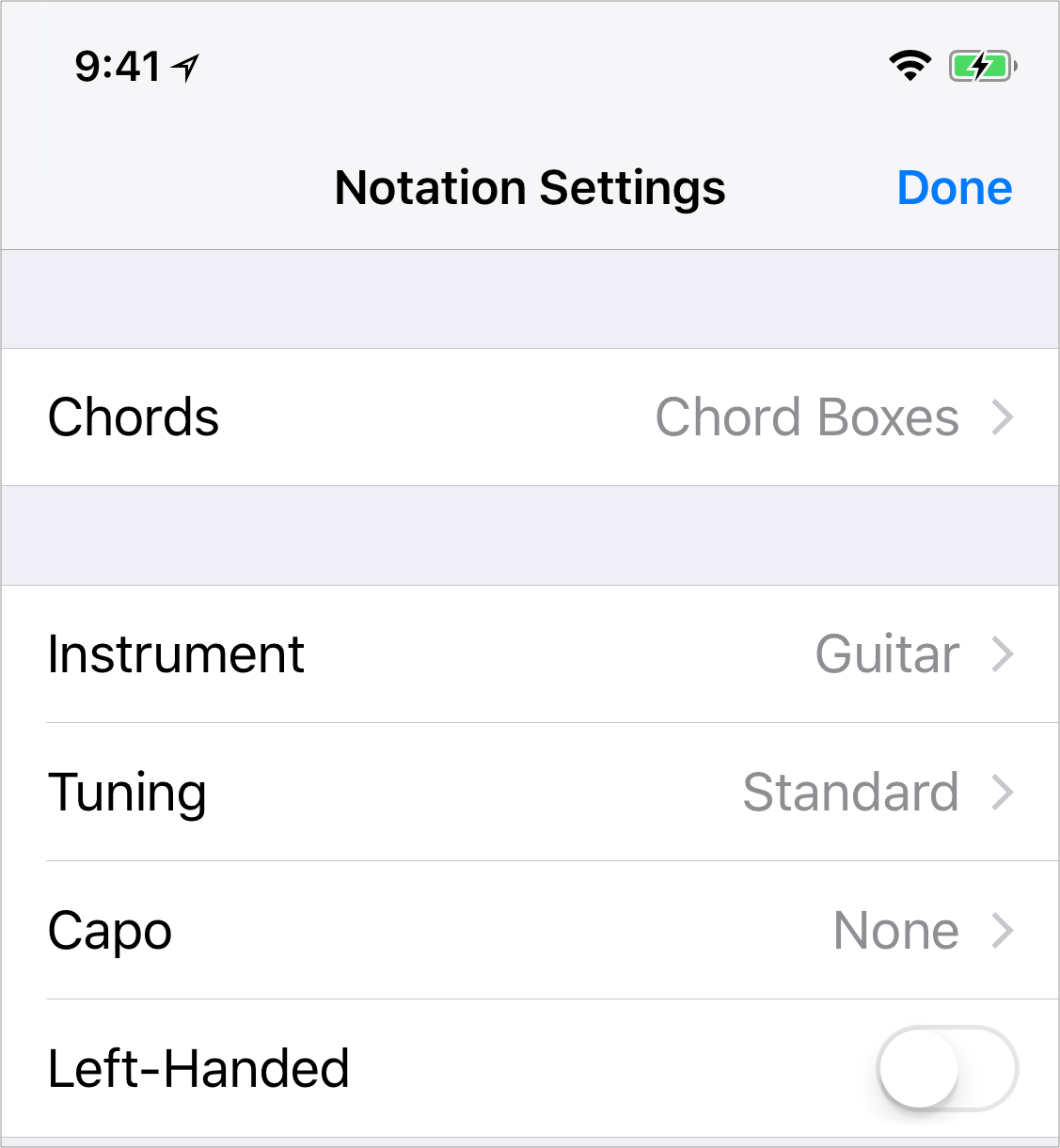
Chords
Here you can choose to hide the chords completely, show just the Chord Names, display guitar Chord Boxes, or use Simple Piano keyboard diagrams.
When you choose Chord Boxes, the following settings will be revealed.
Instrument
In addition to the (6-string) guitar, Capo can display chord boxes for bass (4-6 strings), mandolin, ukulele and banjo. When a different instrument is selected, Capo adjusts how the tablature is displayed in the In-Song View.
Tunings
Different tunings are available for each instrument available. By adjusting the tuning of your instrument, the chord shapes shown in the In-Song View will be adjusted accordingly.
Capo
One of Capo's most useful features for guitarists is the ability to specify a capo position.
Once you choose a fret for the capo, Capo will adjust the chords such that they are displayed in relation to the position you selected. For instance, if the song is calling for a G chord, and you set the capo to the 3rd fret, you would play an open E chord to sound a G. Capo will display an E chord with an open E shape as a result.
Left-Handed Chords
When Chord Boxes are being shown, this setting toggles whether Capo draws its chords flipped for left-handed players. Rock on, southpaws!
The Heads-Up Display (HUD)
The HUD is where you control the song's playback, and where you'll find controls for most of Capo's functionality.

Its main component is the Control Strip—a set of controls displayed beneath the song's playback position that are grouped by their function.
Position Display
The current playback position in the song is indicated above the Control Strip in the Position Display.
You can switch between displaying the current playback time, or the current bar/beat in the song. To do this, simply tap the position display. The Timeline at the top of the Song Area will also change to match the current setting.
You can also long-press the Position Display to seek to a specific position, or quickly jump to the start/end of a song.
Last updated: December 10, 2020